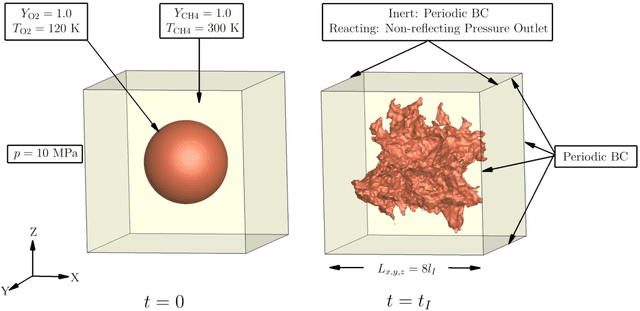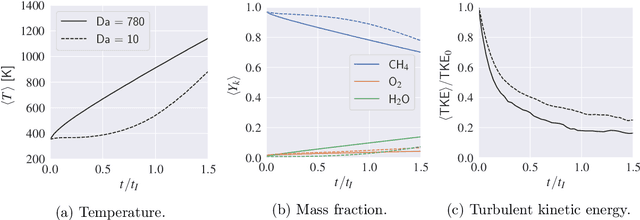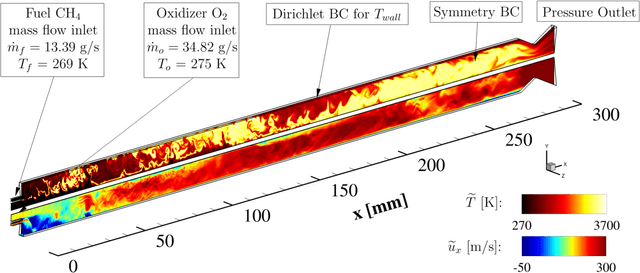Aashwin Ananda Mishra
Physics Constrained Unsupervised Deep Learning for Rapid, High Resolution Scanning Coherent Diffraction Reconstruction
Jun 19, 2023Abstract:By circumventing the resolution limitations of optics, coherent diffractive imaging (CDI) and ptychography are making their way into scientific fields ranging from X-ray imaging to astronomy. Yet, the need for time consuming iterative phase recovery hampers real-time imaging. While supervised deep learning strategies have increased reconstruction speed, they sacrifice image quality. Furthermore, these methods' demand for extensive labeled training data is experimentally burdensome. Here, we propose an unsupervised physics-informed neural network reconstruction method, PtychoPINN, that retains the intrinsic speed of deep learning-based reconstruction while improving reconstruction quality by combining the diffraction forward map with real-space constraints from overlapping measurements. In particular, PtychoPINN significantly advances generalizability, accuracy (evidenced by a 10 dB PSNR increase), and linear resolution (with a 3- to 6-fold gain). This blend of performance and speed offers exciting prospects for high-resolution real-time imaging in high-throughput environments such as X-ray free electron lasers (XFELs) and diffraction-limited light sources.
Interpretable Data-driven Methods for Subgrid-scale Closure in LES for Transcritical LOX/GCH4 Combustion
Mar 11, 2021



Abstract:Many practical combustion systems such as those in rockets, gas turbines, and internal combustion engines operate under high pressures that surpass the thermodynamic critical limit of fuel-oxidizer mixtures. These conditions require the consideration of complex fluid behaviors that pose challenges for numerical simulations, casting doubts on the validity of existing subgrid-scale (SGS) models in large-eddy simulations of these systems. While data-driven methods have shown high accuracy as closure models in simulations of turbulent flames, these models are often criticized for lack of physical interpretability, wherein they provide answers but no insight into their underlying rationale. The objective of this study is to assess SGS stress models from conventional physics-driven approaches and an interpretable machine learning algorithm, i.e., the random forest regressor, in a turbulent transcritical non-premixed flame. To this end, direct numerical simulations (DNS) of transcritical liquid-oxygen/gaseous-methane (LOX/GCH4) inert and reacting flows are performed. Using this data, a priori analysis is performed on the Favre-filtered DNS data to examine the accuracy of physics-based and random forest SGS-models under these conditions. SGS stresses calculated with the gradient model show good agreement with the exact terms extracted from filtered DNS. The accuracy of the random-forest regressor decreased when physics-based constraints are applied to the feature set. Results demonstrate that random forests can perform as effectively as algebraic models when modeling subgrid stresses, only when trained on a sufficiently representative database. The employment of random forest feature importance score is shown to provide insight into discovering subgrid-scale stresses through sparse regression.
Data-assisted combustion simulations with dynamic submodel assignment using random forests
Sep 12, 2020



Abstract:In this investigation, we outline a data-assisted approach that employs random forest classifiers for local and dynamic combustion submodel assignment in turbulent-combustion simulations. This method is applied in simulations of a single-element GOX/GCH4 rocket combustor; a priori as well as a posteriori assessments are conducted to (i) evaluate the accuracy and adjustability of the classifier for targeting different quantities-of-interest (QoIs), and (ii) assess improvements, resulting from the data-assisted combustion model assignment, in predicting target QoIs during simulation runtime. Results from the a priori study show that random forests, trained with local flow properties as input variables and combustion model errors as training labels, assign three different combustion models - finite-rate chemistry (FRC), flamelet progress variable (FPV) model, and inert mixing (IM) - with reasonable classification performance even when targeting multiple QoIs. Applications in a posteriori studies demonstrate improved predictions from data-assisted simulations, in temperature and CO mass fraction, when compared with monolithic FPV calculations. These results demonstrate that this data-driven framework holds promise for the dynamic combustion submodel assignment in reacting flow simulations.
 Add to Chrome
Add to Chrome Add to Firefox
Add to Firefox Add to Edge
Add to Edge